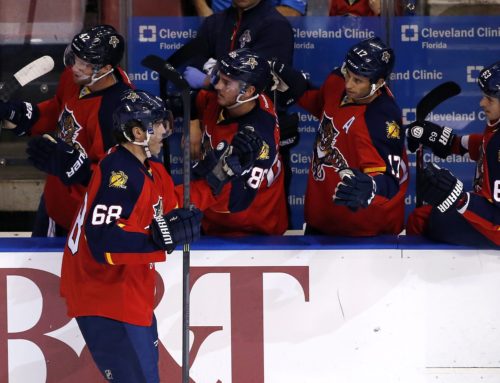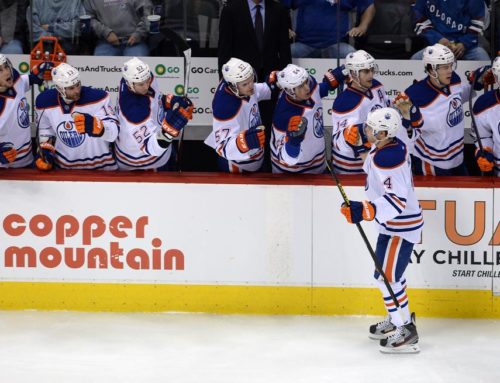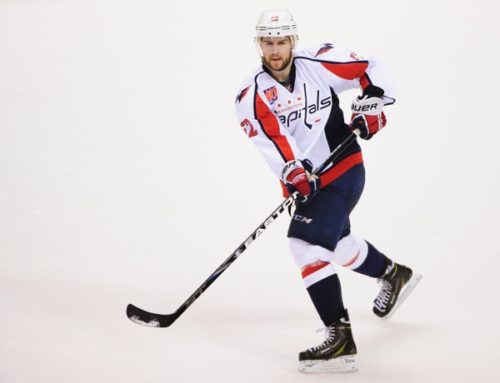Five Hard to Project Players
steve laidlaw
2014-09-20

Rob Vollman tells you what to expect from these five hard-to-project players.
Will Tyler Seguin win the scoring race? Will Gustav Nyquist lead the Red Wings? Can we expect a bounce back season from Chris Stewart, or break-out seasons from Adam Henrique and Jakob Silfverberg?
These are just five of the players whose scoring totals are hardest to project, based on an analysis of every major expert’s scoring projections, including Dobber himself. Each of these five players are expected to fall anywhere inside ranges that are at least 20 points wide. Can modern hockey analytics help narrow that down a little bit?
I’ve put a lot of thought into how some recent advances can help establish a player’s scoring expectations, and here’s what I’ve come up with.
- "Without You, With You" (WOWY) analysis helps determine how a player’s scoring changed with different linemates. This data is available at Hockey Analysis.
- A player’s scoring can be boosted by being used more often in the offensive zone and/or against secondary opponents. That data can be found at Behind the Net, or you can build a Player Usage Chart at Hockey Abstract.
- Sometimes you can tell if a player went on a lucky hot (or cold) stretch by looking at his shooting percentage, and those of his linemates, which is also available at Behind the Net.
- I developed a system to find the 10 players throughout history with the most similar era-adjusted career scoring arcs, and see how they did the next season. The full results are available for purchase in the Dobber store, and you can build your own manually using Hockey Reference’s Season Finder.
While we will be pursuing five tangible goals, the more interesting aspect of this analysis is actually how analytics can be applied, and not so much the results. Indeed, if you disagree with my own interpretation, you’ll be free to use the data to pursue your own, while always keeping in mind that analytics is just one perspective anyway.
And remember, by definition there is no consensus among the experts on any of these five players, so as long as your own opinion falls anywhere within each broad range, then there’s no reason to worry if it differs from mine. Let’s begin!
Tyler Seguin, Dallas
While most projections involve Dallas’ first line center remaining at the point-a-game level or below, some analysts have Seguin pegged for much more. One publication projects 42 goals and 94 points, which would set the franchise single-season scoring record, while another has him down for a league-leading 110 points. Is he worth gambling a top-five pick?
Seguin has an enormous offensive upside, especially when playing in the offensive zone alongside Jamie Benn. Last year he spent almost 85% of his even strength ice time alongside Benn, where he scored all but three of his points. That’s unquestionably the key to Seguin’s scoring success. Seguin finished fourth in the league in points and shots, fifth in goals, and sixth in even strength points, and in no (other) way had his scoring boosted by advantageous playing conditions or lucky shooting.
So the wild card here is the arrival of playmaker Jason Spezza, who may battle Seguin for some of that premium ice time in the offensive zone with Benn (and/or Valeri Nichushkin). Will that take a bite out of Seguin’s scoring? Or, will the construction of a second scoring line around Spezza, not to mention having his considerable talents on the power play, actually boost Seguin’s scoring totals?
I like to look to history for answers. In this case I went back five seasons to look for comparable situations. That is, teams who had a point-a-game player (or close to it) that suddenly acquired a secondary playmaker like Spezza at the same position. I didn’t cherry pick the results the advance, and I’m as curious about the answer as you are. Based on the five best examples, a rival’s arrival doesn’t seem to affect the player very much either way. Spezza may be a non-factor here.
|
Team |
Season |
Player |
PTS/GP |
Acquired |
Result |
|
Philadelphia |
2013-14 |
Claude Giroux |
1.00 |
Vincent Lecavalier |
1.05 |
|
Washington |
2012-13 |
Nicklas Backstrom |
1.05 |
Mike Ribeiro |
1.00 |
|
Los Angeles |
2011-12 |
Anze Kopitar |
0.97 |
Mike Richards |
0.93 |
|
Anaheim |
2009-10 |
Ryan Getzlaf |
1.12 |
Saku Koivu |
1.05 |
|
Ottawa |
2009-10 |
Daniel Alfredsson |
0.94 |
Alex Kovalev |
1.01 |
The safest bet is for Seguin to continue along at roughly the point-a-game pace. Searching history for players with a similar scoring arc over their first few seasons, there is only one real precedent for a breakout beyond the point-a-game pace, and that’s Steve Yzerman. I’m not sure Seguin fits that mold.
Consider Carolina’s Eric Staal as a more modern comparable. In the OHL he scored 98 points in 66 games (Seguin had 106 in 63), followed by 31 points in 81 games as an NHL rookie (Seguin had 22 in 74). After pausing for the 2005 lockout, Staal’s huge 21-year-old season resulted in 100 points in 82 games. What happened next? Staal settled into six straight seasons in the 70-76 range, with one 82 point season in 2007-08. All things being equal, I expect Seguin to do the same, or slightly better.
Chris Stewart, Buffalo
Not many players have scoring totals that fluctuate as wildly as Buffalo’s new power forward. Chris Stewart scored just 19 points as a rookie in 2008-09, followed by 117 points in 139 games over the next two. He then fell back down to 30 points in 75 games, before leading the Blues with 36 points in the lockout-shortened 2012-13 season. Last year he managed just 26 points in 63 games. That’s why his 2014-15 projections fall anywhere between 38 and 65 points.
What were the differences between those seasons? Well, he can thank Paul Stastny for his strong years in Colorado, a highly underrated player who can make a scoring star out of almost anyone. But Stewart’s big 2012-13 season in St. Louis was alongside Patrick Berglund, who couldn’t make a star out of a hot ball of hydrogen and helium.
It’s also important to remember that Stewart scored on an unsustainably high 18.6% of his shots in 2012-13, and Berglund a league-high 23.0%. Short seasons can easily allow random variations to skew the statistics, and that’s a big part of what happened here. After all, the Blues were badly outplayed in the possession game when Stewart’s line was on the ice, despite extremely favourable playing conditions in the offensive zone and against secondary opponents. If they hadn’t converted on a whopping 11.8% of their shots, then they would have been badly outscored too, which would have probably pushed Stewart down the depth chart a year sooner.
A look at history isn’t particular kind to him, either. There’s really only one or two reasonable precedents for someone with Stewart’s scoring arc to achieve even the low water estimate of 38 points, and that’s the relatively dissimilar players Sergei Berezin and Chuck Kobasew. Even in those rare cases, their scoring success was short-lived.
All that said, if everybody lays off Stewart until the final rounds, he could be a good sleeper pick. He’s in a contract year, much as he was in 2012-13, and in Buffalo he doesn’t have as much competition for top scoring line opportunities. If he can find and maintain his warrior work ethic, then he certainly can be one of the league’s better power forwards.
Adam Henrique, New Jersey
Common sense establishes 40 to 50 points as the safe projection for New Jersey’s hard-working young two-way center, but one optimistic publication projects 31 goals and 67 points. Is there something special about this youngster that will reveal itself under closer inspection?
Although he is a tremendous player on a team that added some scoring depth, I just don’t see that high of an offensive upside for Henrique.
How much of his past scoring success may have actually been thanks to Henrique’s linemates? For example, in his Calder finalist season of 2011-12, Henrique scored 2.0 points per 60 minutes (at even strength) when playing with Zach Parise (and Ilya Kovalchuk), but just 1.3 without him. Even last year, he managed the same 2.0 scoring rate with Patrik Elias, but just 1.1 points per 60 minutes without him.

If he continues to play with the likes of Michael Ryder and Ryane Clowe, then there’s just no way his scoring can vault beyond 50 points, even if he does somehow maintain the fifth highest shooting percentage in the league (18.2%).
There’s no question that Henrique is a fantastic two-way player, as demonstrated by his league-leading nine shorthanded goals over the past three seasons, but there isn’t any evidence of a 67-point upside. His high water mark in the OHL was just 77 points, he scored just 50 points in 73 AHL games in 2010-11, and his historical comparables are virtually all between 42 and 54 points, at best.
That’s very impressive, but there is room for doubt. After all, Nyquist scored just 13 points in 40 NHL games prior to last year, and his 18.3% shooting percentage last year, which ranked fourth in the NHL, was quite a bit higher than even his established AHL rate of 13.7%. It will regress, as will Detroit’s 10.7% even strength team shooting percentage when he’s on the ice. That’s a big reason why Sportsnet’s analytics specialist Tyler Dellow had Nyquist on his "Buyer Beware" list recently (Tyler Seguin was there too).
Long story short, Nyquist is certainly one of the more intriguing first round possibilities. A look at similar players throughout history does nothing to narrow the range of scoring expectations, from a base of 30-some points all the way up to a point-a-game season, with an average of around 60 points over a full season.
This situation is a little too unpredictable for me, but if you need a gamble to put yourself over the top, then check out a recent analysis on Hockey Writers, and keep a close eye on him in training camp.
Closing Thoughts
There are a number of different ways hockey analytics can be used to help set a player’s scoring expectations. While none of these approaches are foolproof, playing conditions, scoring rate with different linemates, unusually high or low shooting percentages, and how statistically similar players have done in the past can all be used to build arguments for one end of a scoring projection’s range over another.
My own interpretation of the available data has me less enthusiastic about Tyler Seguin’s potential to win the Art Ross, and leaves me relatively cool on Adam Henrique’s chances of a breakout, or Chris Stewart’s chances for a bounce back. Gustav Nyquist is too much of a gamble for my taste, but I see definite breakout potential in Jakob Silfverberg. I’d like to hear your take on these five players in the comments, along with who you might want me to study next time.





 MIN
MIN SEA
SEA WPG
WPG VAN
VAN CGY
CGY S.J
S.J COL
COL EDM
EDM VGK
VGK ANA
ANA L.A
L.A CHI
CHI MTL
MTL TOR
TOR PIT
PIT NYI
NYI CBJ
CBJ ARI
ARI CAR
CAR BUF
BUF
